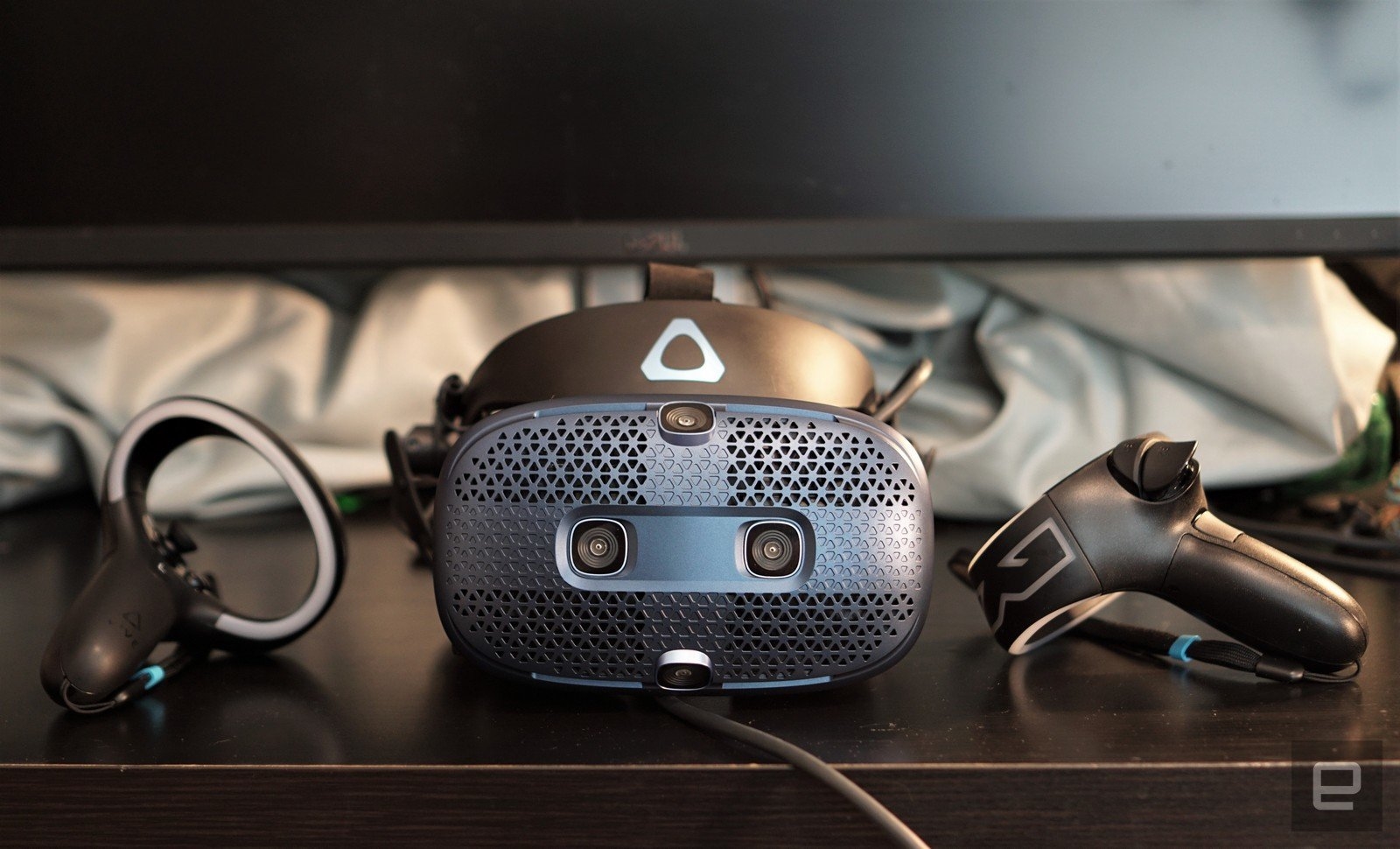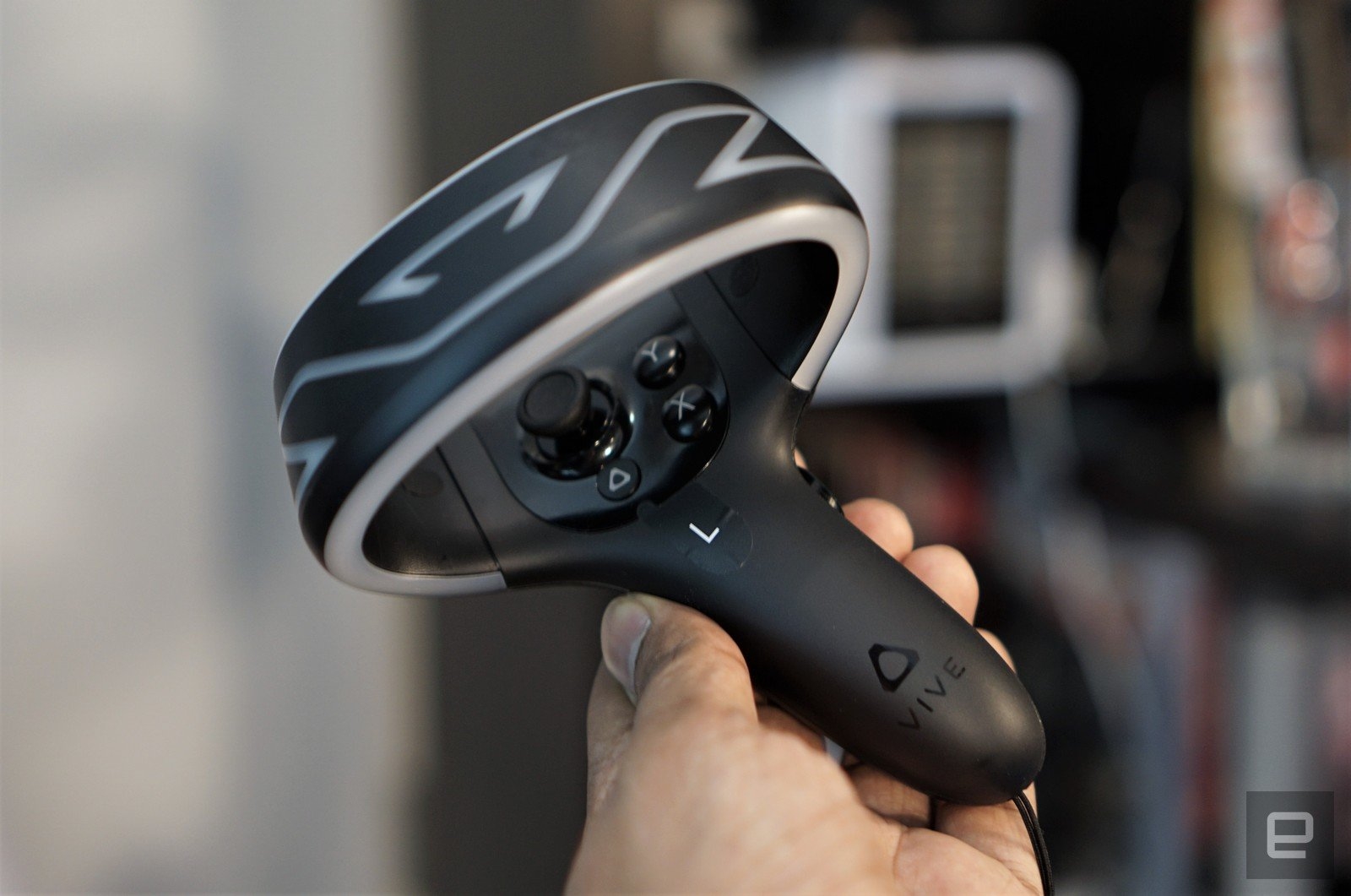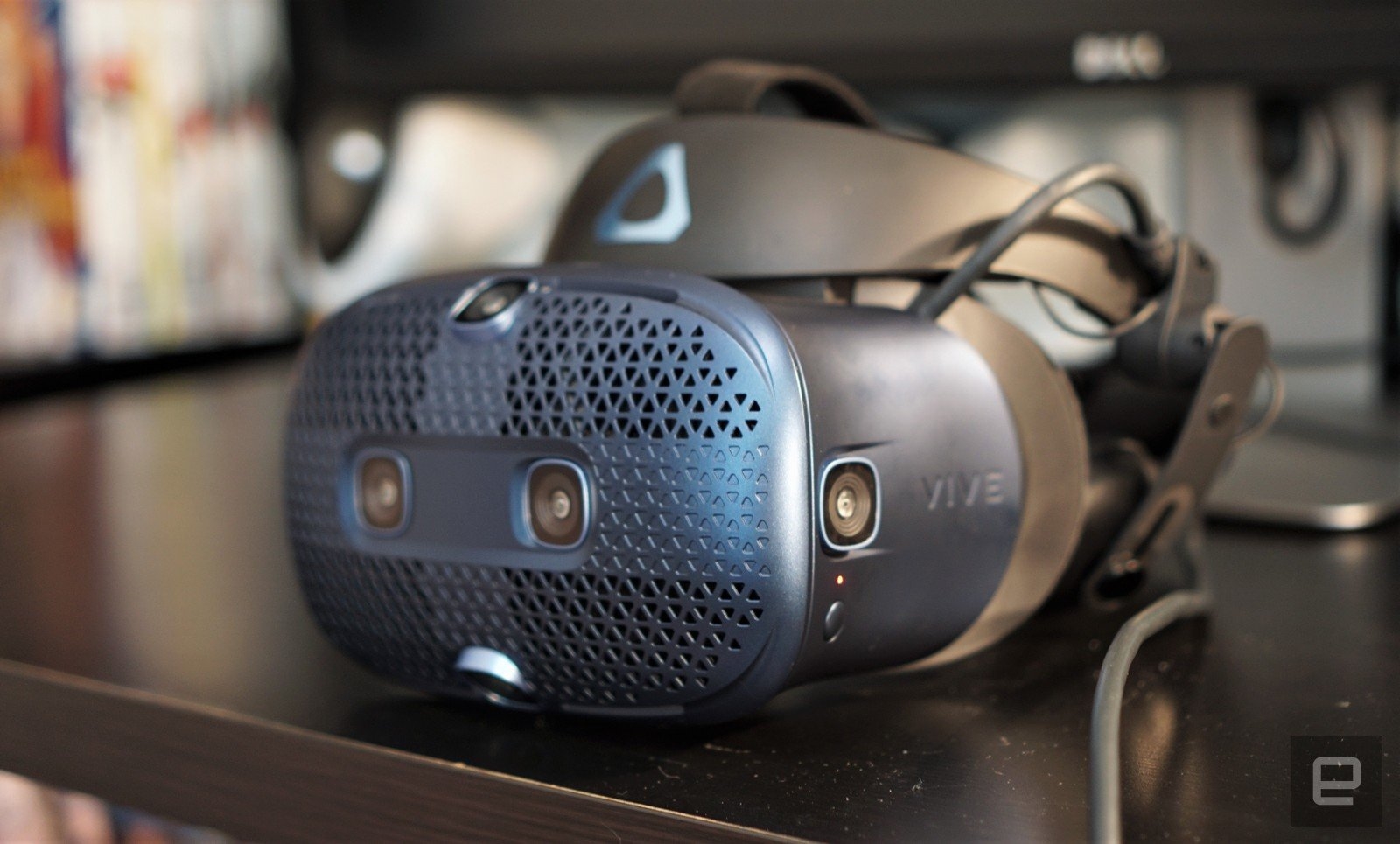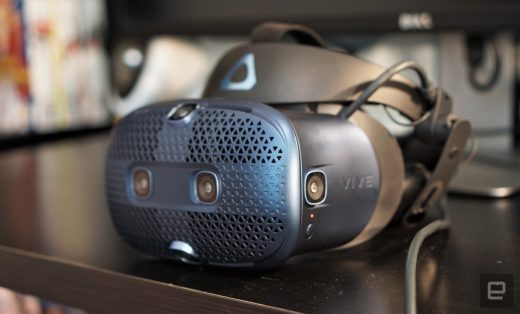HTC Vive Cosmos review: Too late, too expensive

The battle for at-home virtual reality started with the Oculus Rift and HTC Vive — but these days things are getting complicated. The Oculus Quest proves solid standalone VR is possible, and Valve is pushing the limits of high-end VR with the Index. Now here comes the Vive Cosmos, HTC’s first true successor to the Vive and business-focused Vive Pro.
Technically, the Cosmos is an upgrade in just about every way, but there’s just one problem: It costs $699, which makes it far more expensive than the Oculus Quest ($400) and Rift S ($400). The Cosmos’s price is a baffling strategic decision by HTC when the competition is so strong.
The Cosmos doesn’t look much different than most modern VR headsets: There are six cameras around the front, a halo-like headstrap and built in headphones. It has a slick dark blue and black aesthetic that looks more interesting than the original Vive. It also looks and feels like a far higher quality product than the Rift S, which Oculus farmed out to Lenovo to design and build. Another plus: You can flip the Cosmos up while you’re wearing it, like many Windows Mixed Reality headsets, in case you need to take a quick break. And, the faceplate is removable, which leaves room for installing mods to customize your VR experience.
HTC made sure to put plenty of comfy cushioning throughout the headset, especially where it rests on your forehead and around the eyes. The Cosmos is easy to put on thanks to its flexible visor, but it didn’t sit as comfortably on my head as the Index or Rift S. It didn’t matter how much I fiddled with the headstrap, it always felt a bit off. That didn’t prevent me from wearing it for shorter sessions, but it definitely hurt the Cosmos’s sense of presence, since I was always aware of it. Another major annoyance is the pattern along the forehead cushion, as it inevitably leaves weird imprints on your head.

While I definitely have quibbles with its design, I appreciated not having to set up any Lighthouse sensors to use the Cosmos. Instead, it uses internal sensors to scan your environment and track your movement. We’ve already seen these sensors on the standalone Vive Focus, but this is the first time HTC has brought them to a flagship PC device. It’s a smart move, since it means you can easily pick up the Cosmos and bring it somewhere else, without having to worry about installing sensors.
It’s clear that HTC still has to optimize the Cosmos’s built-in sensors, though. It simply couldn’t see my office at night until I turned on every single light in the room, which is a problem I never had with other headsets.
Setting up the Cosmos involves plugging its breakout box into a USB 3.0 port, DisplayPort and power. Then, you just need to connect the headset to the front port. As with every other high-end headset, you’ll have to live with a long cable as you dive into VR. I didn’t find it unbearable, but you can also attach the $300 Vive wireless adapter for a bit more freedom.
HTC also created a software suite to guide you through the installation, instead of relying entirely on the SteamVR setup. The new process looks better than before, but the software is still pretty buggy. It had trouble recognizing that my zip code was in the US, and it crashed several times during setup. I was able to move forward by plugging in a random zip code, but the whole process didn’t instill much confidence in HTC’s apps. There’s a quick tutorial as part of the elaborate new “Vive Reality System” experience, but you’ll be spending most of your time in Lens, HTC’s new interface for exploring your VR library.
The Cosmos also comes with a year’s worth of Viveport Infinity, HTC’s subscription service that gives you access to a huge games and experiences. It typically costs $13 a month or $108 annually, so getting a free year is a solid deal.
Viveport Infinity is also integrated directly into Lens, so games you snag there will show up with anything you’ve already purchased via Steam or the Vive store. It makes sense for HTC to try and offer a more customized experience for Vive users, but the Lens app still feels a bit half-baked. Navigating through the menus feels slow and clunky, and I had issues launching some games.
Once I worked through the software issues, the Vive Cosmos managed to deliver a solid high-end VR experience. In the shooter Raw Data, the high-res displays made the environments look crisper and more detailed than on the Vive. It was also a great test for the Cosmos’s tracking and motion controllers, since it involves a lot of fast-paced shooting with a variety of weapons. The headset didn’t have any trouble keeping up, even when I was desperately trying to avoid getting killed by evil robots.
Superhot, which is still my favorite VR game, runs like a dream on the Cosmos. It’s slower paced, but it also involves plenty of movement and precise combat. Clearly, HTC didn’t lose much accuracy by moving to inside out tracking. The only major issue I had was its need for a ton of light. I would occasionally get error messages in-game saying my environment needs to be brighter. HTC is aware of that issue, but so far, the company has just reduced the amount of error notifications that pop up. Hopefully it figures out some way to optimize its sensors for low light soon, though.

The Vive Cosmos’s controllers, meanwhile, feel serviceable yet unremarkable. You’ll notice they look a lot like Oculus’s touch controllers, with contoured handles, analog sticks and gamepad-like buttons. There are two trigger buttons at the top, as well as a grip button.
At this point, Oculus is on its second generation controllers, and Valve is exploring completely new VR interaction methods with its finger tracking controllers. HTC just seems to be playing catch up, with a design that clearly bites from what Oculus did four years ago, and no major innovations. The controllers work fine, but everything about them just feels cheap and a step behind the competition. It was also annoying to hold them for long, since they’re so big. That’s another area where the Index beats out the Cosmos. Since its controllers are physically strapped to your hands, holding them is literally effortless.
Valve’s headset also offers superior audio with its near-field speakers. The Cosmos’s headphones sound fine, but I had a lot of trouble getting them to sit close to my ears. Thankfully, you can easily remove them if you’d rather use your own headphones.

So sure, the Vive Cosmos isn’t perfect, but on the whole I think it’s a solid high-end headset. That $699 price, however, makes it incredibly hard to recommend. While it’s a better experience than the Rift S, but it’s not $300 better. And the Cosmos is even harder to swallow when the $400 Oculus Quest offers great standalone VR, and soon it’ll even run PC virtual reality over a cable. And if you’ve got the money to burn, the $1,000 Valve Index is a far better play at next-level VR, even though it requires setting up sensors.
If HTC released the Cosmos a year ago, I would have sang its praises. But today, now that inexpensive VR is getting better and high-end VR is more innovative, I’m not sure who the Cosmos is actually for.
(33)



